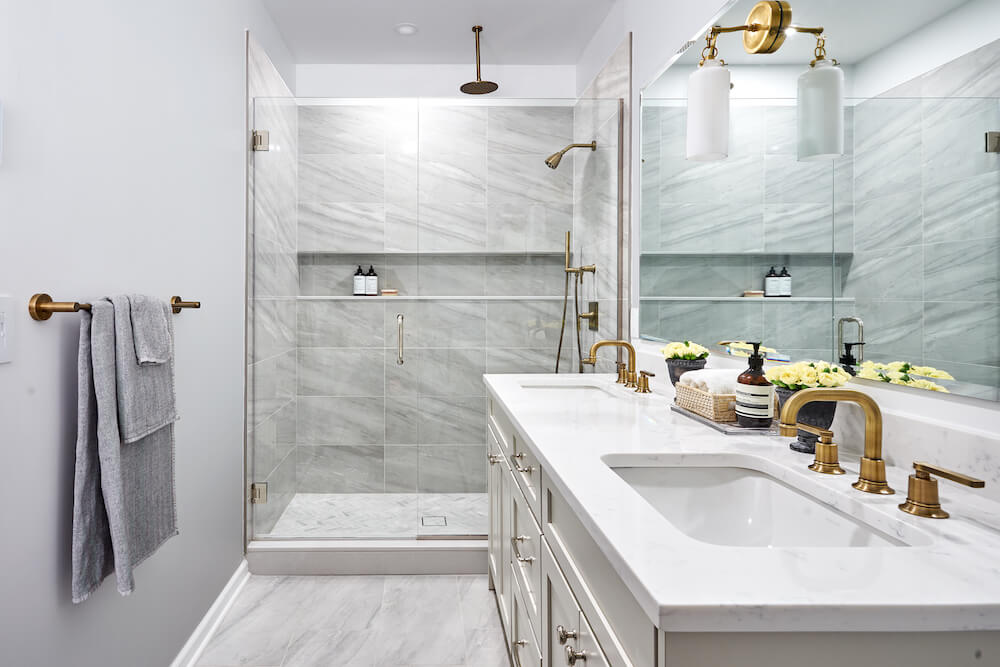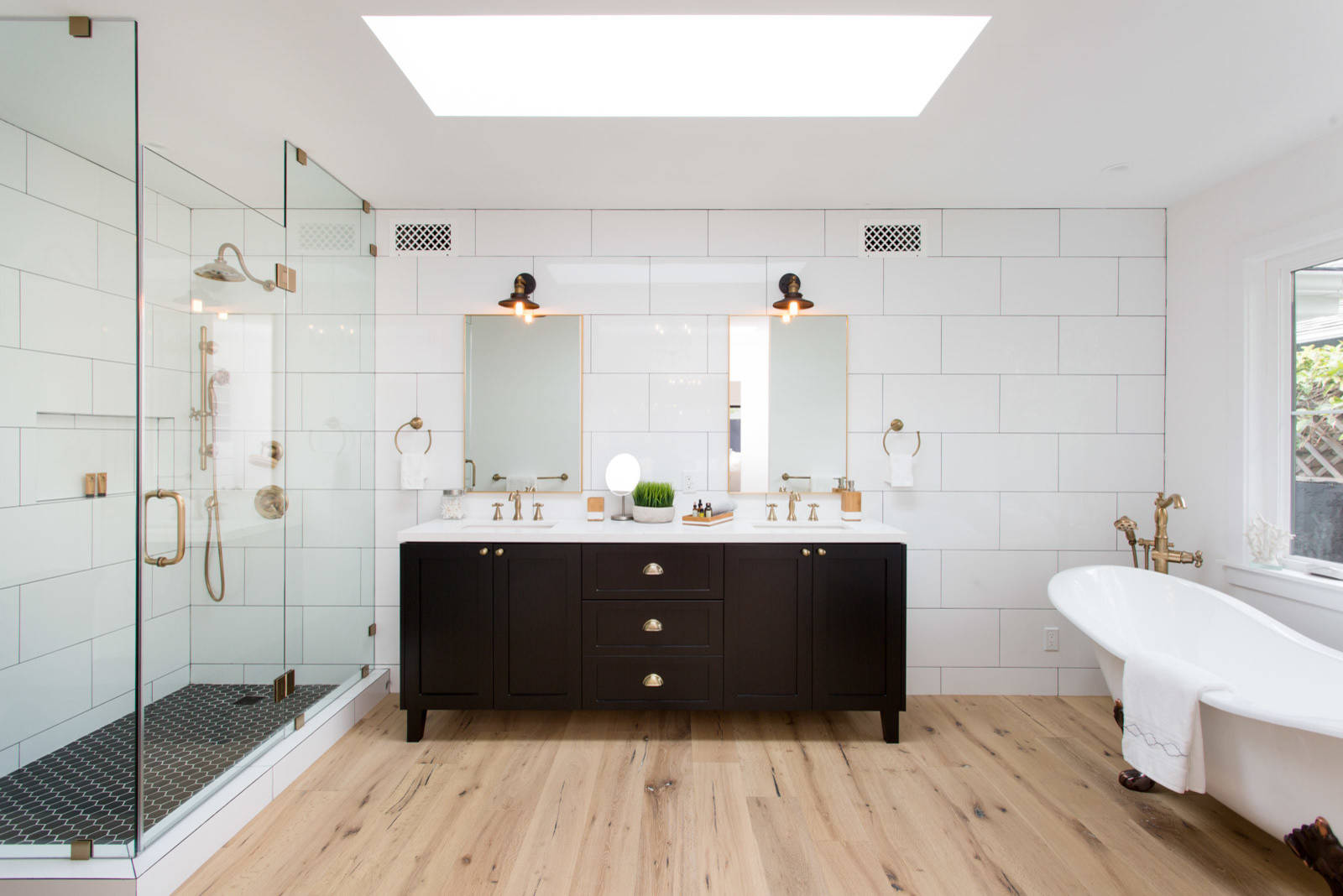When it comes to designing or remodeling a bathroom, choosing the right sink is crucial for both functionality and aesthetics. One common dilemma that homeowners face is determining what size sink will fit a 24-inch bathroom cabinet. In this comprehensive guide, we’ll delve into various factors to consider and provide insights to help you make an informed decision.
Understanding the Constraints

When considering the constraints of selecting a sink for a 24-inch bathroom cabinet, it’s vital to delve deeper into the specific limitations imposed by the cabinet’s dimensions. Let’s explore these constraints in more detail:
Size Limitations
- Width: The width of the cabinet defines the maximum width a sink can occupy. For a 24-inch cabinet, any sink selected must not exceed this width to ensure proper fitting. Choosing a sink wider than the cabinet would result in overhangs or improper alignment, detracting from the overall aesthetics and functionality of the space.
- Depth: While depth is often overlooked, it’s crucial for ensuring adequate space within the bathroom. The sink’s depth must be carefully considered to avoid protruding too far into the bathroom, which could impede movement or create a cramped feel. Balancing the sink’s depth with the available space is essential for optimizing usability and comfort.
Style Considerations
- Single Bowl vs. Double Bowl: The limited width of a 24-inch cabinet restricts the choice of sink configuration. Single bowl sinks are typically the only viable option, as double bowl sinks require additional width that exceeds the cabinet’s dimensions. Homeowners must prioritize functionality and practicality when opting for a single bowl sink, ensuring it meets their daily needs without compromising space efficiency.
- Design Compatibility: Beyond size constraints, the cabinet’s dimensions also influence the design compatibility of the chosen sink. Certain sink styles, such as rectangular or “D” sinks, may be more suitable for smaller cabinets, offering space-saving features while maintaining aesthetic appeal. Considering the overall design theme and layout of the bathroom is essential for selecting a sink that seamlessly integrates with the existing space.
Sink Options for 24-Inch Bathroom Cabinets
:strip_icc()/double-vanity-ideas-3-cathie-hong-palo-alto-82b9273a8c374af4aa19661363d66e55.jpg)
Selecting the right sink for a 24-inch bathroom cabinet requires careful consideration of various options that not only fit within the limited space but also complement the overall design aesthetic. Let’s explore the available sink options in more detail:
Undermount Sinks
- Seamless Integration: Undermount sinks are installed beneath the countertop, providing a seamless and streamlined appearance. This design feature maximizes countertop space and creates a clean, modern look in the bathroom.
- Countertop Compatibility: Undermount sinks are particularly well-suited for countertops made of materials such as granite, quartz, or solid surface. These materials allow for secure installation and provide ample support for the sink’s weight.
- Size Considerations: When choosing an undermount sink for a 24-inch cabinet, it’s essential to select one that fits comfortably within the cabinet’s dimensions. Pay close attention to both the width and depth of the sink to ensure proper installation and functionality.
Drop-in Sinks
- Versatile Installation: Drop-in sinks, also known as top-mount sinks, sit on top of the countertop and are secured in place with clips or adhesive. This installation method offers versatility and ease of installation, making it suitable for various countertop materials.
- Wide Range of Styles: Drop-in sinks come in a wide range of styles, shapes, and sizes, making them suitable for different design preferences and bathroom layouts. From traditional oval sinks to contemporary rectangular designs, there’s a drop-in sink to suit every taste.
- Compatibility with Different Countertops: Unlike undermount sinks, drop-in sinks can be installed on a variety of countertop materials, including laminate, Formica, and tile. This versatility makes them an ideal choice for homeowners with different countertop preferences.
Rectangular vs. “D” Sinks
- Rectangular Sinks: Rectangular sinks offer a classic and timeless look that complements a wide range of bathroom styles. Available in various sizes, these sinks maximize usable space within the cabinet while providing ample room for everyday use.
- “D” Sinks: “D” sinks, shaped like a capital letter D on its side, are designed to maximize space efficiency in smaller bathrooms. These sinks feature a unique design that allows for optimal utilization of limited cabinet space while still providing adequate room for washing and other tasks.
Factors to Consider When Choosing a Sink

Selecting the right sink for a 24-inch bathroom cabinet involves considering various factors beyond just size and style. Let’s delve deeper into the key factors to help you make an informed decision:
Countertop Material Compatibility
- Undermount vs. Drop-in: The material of your countertop plays a significant role in determining the type of sink you can choose. Undermount sinks are typically compatible with materials like granite, quartz, or solid surface, as they require a strong and stable surface for installation. On the other hand, drop-in sinks offer more versatility and can be installed on a wider range of materials, including laminate, Formica, and tile.
- Stability and Support: Ensure that the selected sink is compatible with the countertop material in terms of stability and support. Undermount sinks rely on secure installation beneath the countertop, requiring sufficient structural integrity to support the weight of the sink and withstand daily use.
Personal Style and Preferences
- Aesthetic Appeal: Consider your personal style and the overall aesthetic of your bathroom when choosing a sink. Whether you prefer a classic, traditional look or a sleek, modern design, there are various sink styles and finishes available to complement your preferences.
- Sink Design: Pay attention to the design features of the sink, such as the shape, depth, and finish. Rectangular sinks offer a timeless appeal, while “D” sinks provide a space-saving solution for smaller bathrooms. Additionally, consider the depth of the sink and whether it meets your needs for everyday use.
Functionality and Practicality
- Single vs. Double Bowl: Evaluate your daily usage and determine whether a single bowl or double bowl sink would better suit your needs. While a single bowl sink maximizes usable space within a 24-inch cabinet, a double bowl sink offers added versatility for tasks such as dishwashing and food preparation.
- Drainage and Cleaning: Consider the design features of the sink, such as drainage lines and cleaning accessibility. Some sinks may feature sloped bottoms and strategically placed drain openings to facilitate efficient drainage and easier cleaning, enhancing overall functionality.
Budget and Long-Term Durability
- Cost Considerations: Set a budget for your sink purchase and consider factors such as material quality, brand reputation, and warranty coverage. While high-quality sinks may come with a higher initial cost, they often offer better durability and long-term performance, reducing the need for frequent replacements or repairs.
- Durability and Maintenance: Evaluate the durability and maintenance requirements of the chosen sink material. Materials like stainless steel and porcelain are known for their durability and ease of maintenance, while options like natural stone may require more frequent care and maintenance to preserve their appearance over time.
Recommended Sink Sizes and Styles
:strip_icc()/double-vanity-ideas-20-katie-martinez-upper-rockridge-residence-1e2f83f32c414a0e926eb70a40c5258d.jpg)
Choosing the right sink size and style for a 24-inch bathroom cabinet is essential to ensure optimal functionality and aesthetic appeal. Let’s explore some recommended sink sizes and styles in greater depth:
Rectangular Undermount Sink
- Dimensions: Opt for a rectangular undermount sink with dimensions that fit comfortably within the confines of the 24-inch cabinet. Ensure that the width of the sink does not exceed 24 inches to prevent any overhangs or fitting issues.
- Space Optimization: Rectangular undermount sinks offer a classic and versatile option for small bathroom spaces. Their sleek and streamlined design maximizes usable countertop space while providing ample room for daily tasks such as handwashing and grooming.
“D” Sink
- Compact Design: Consider a “D” sink, which features a unique design resembling the letter “D” on its side. This space-saving sink style is specifically designed to maximize space efficiency in smaller bathrooms, making it an ideal choice for 24-inch cabinets.
- Functionality: Despite its compact size, a “D” sink still offers adequate room for washing and other tasks. Its innovative design allows for optimal utilization of limited cabinet space without sacrificing functionality or usability.
Drop-in Sink
- Versatility: Choose a drop-in sink with dimensions that fit comfortably within the 24-inch cabinet. Drop-in sinks offer versatility in terms of installation and are available in various shapes and sizes to suit different design preferences and bathroom layouts.
- Ease of Installation: Drop-in sinks are relatively easy to install and can be secured in place on top of the countertop using clips or adhesive. This installation method makes them suitable for a wide range of countertop materials, including laminate, Formica, and tile.
Considerations for Style Preferences
- Traditional vs. Contemporary: Consider your style preferences when selecting a sink. Traditional sinks with large radius corners offer a classic and timeless look, while sinks with small or zero radius corners provide a more contemporary and modern aesthetic.
- Additional Features: Look for sinks with additional features such as drainage lines at the bottom or unique design elements that enhance both functionality and style. These features can add character to your bathroom space while providing practical benefits for everyday use.
Conclusion
Selecting the right size sink for a 24-inch bathroom cabinet requires careful consideration of various factors, including size limitations, style preferences, and countertop material. By understanding these considerations and exploring the available options, you can find a sink that not only fits your cabinet but also enhances the functionality and aesthetics of your bathroom space. Whether you prefer a classic rectangular sink or a space-saving “D” sink, there are plenty of options to suit your needs and preferences.

